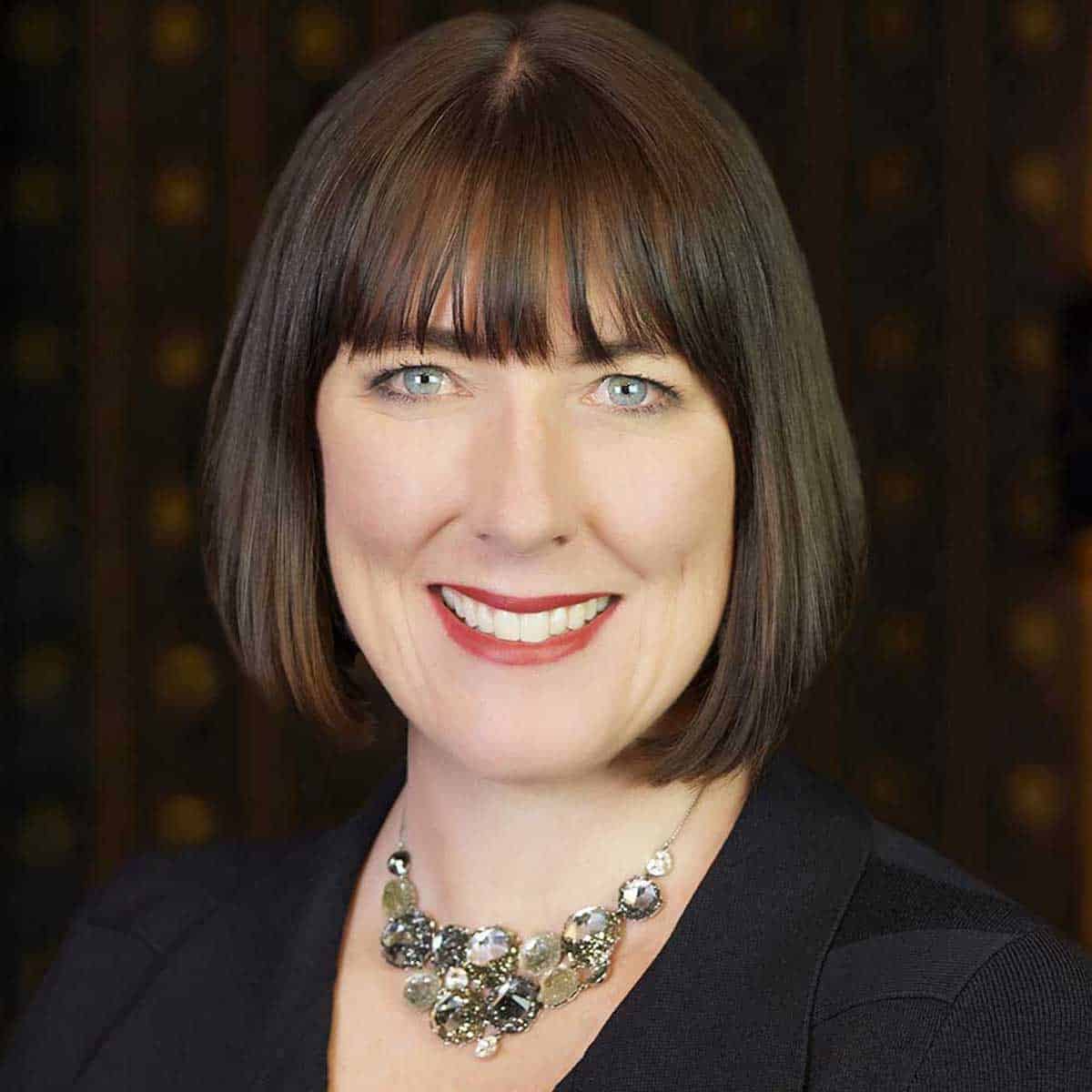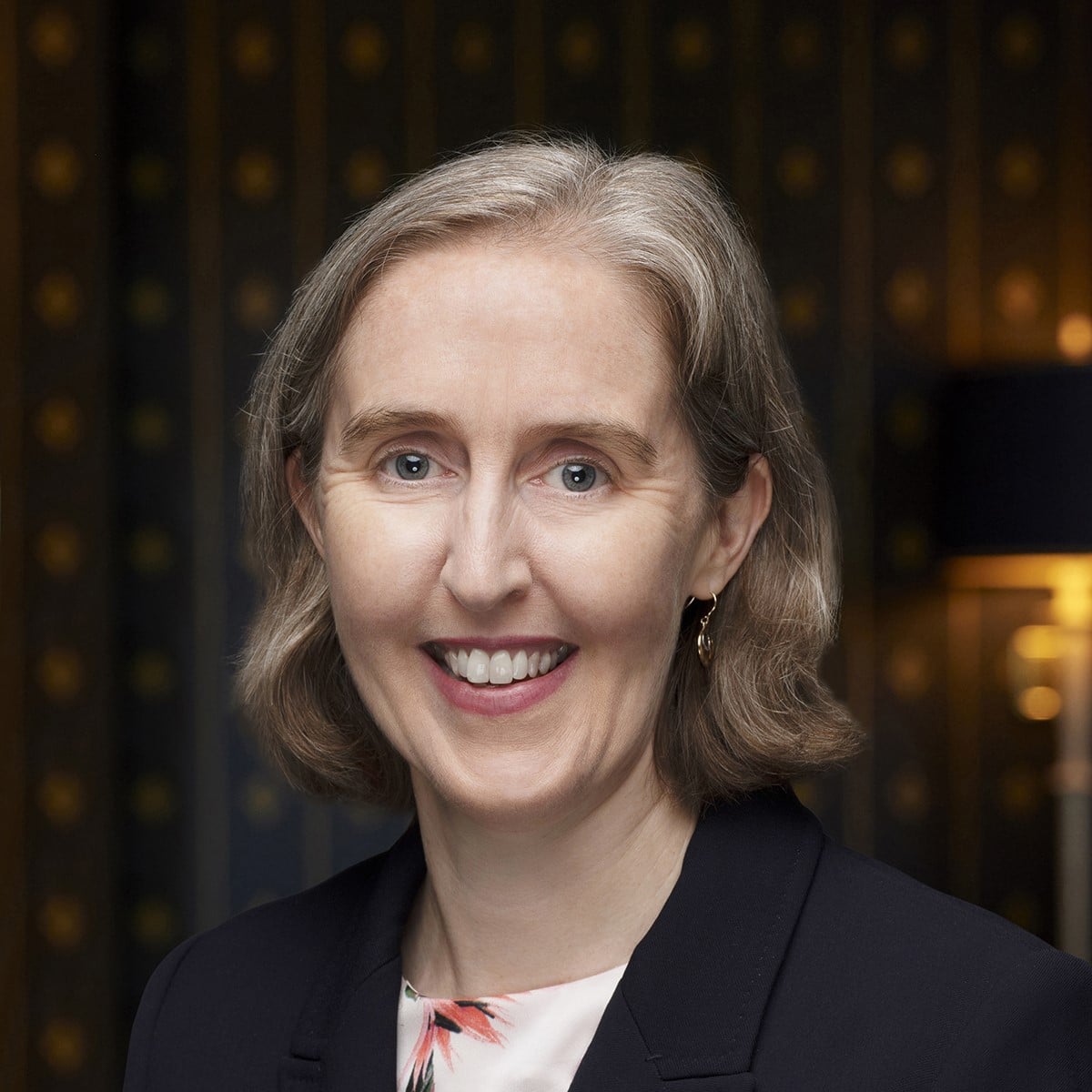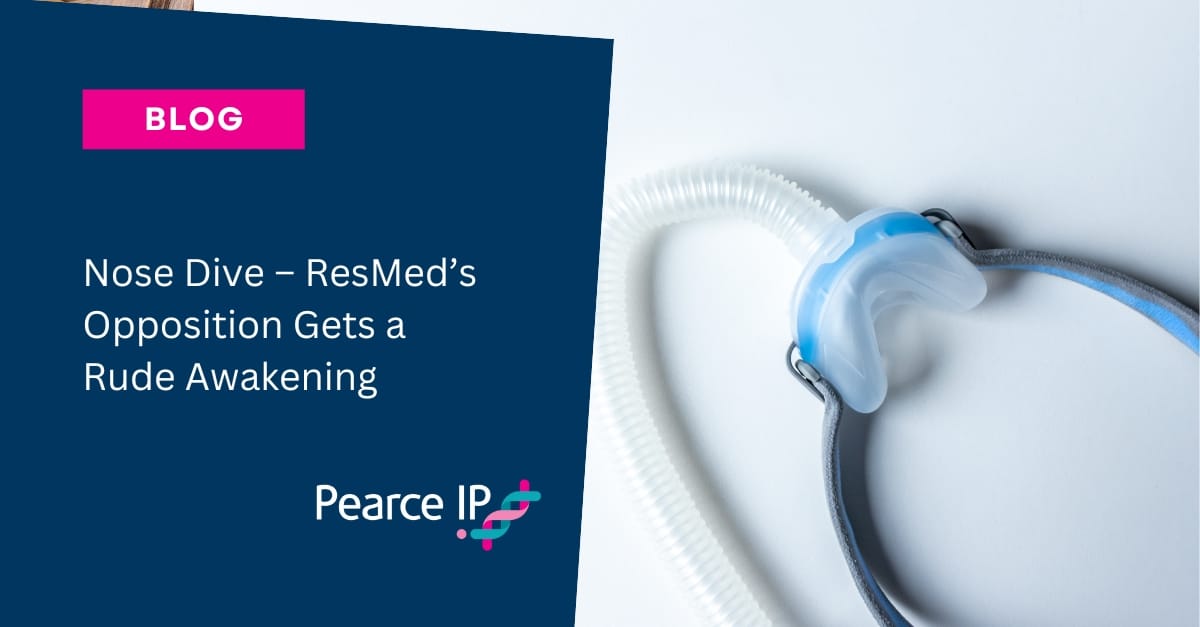| Date of decision: | 05 July 2024 |
| Body: | Australian Patent Office |
| Adjudicator: | Delegate McCaffery |
Background
In a recent decision of the Australian Patent Office, Delegate McCaffery has ruled on opposition proceedings between ResMed Pty Ltd (ResMed) and Fisher & Paykel Healthcare Limited (Fisher & Paykel). The proceedings concerned six patent applications relating to patient interfaces for delivering breathing gases, with specific focus on nasal seals for continuous positive airway pressure (CPAP) therapy:
- AU2020223628 (‘628)
- AU2021201838 (‘838)
- AU2021201840 (‘840)
- AU2021201841 (‘841)
- AU2021201842 (‘842)
- AU2021201843 (‘843)
Each application claimed an inflatable nasal seal with a soft, flexible central portion and stiffer side portions conforming to the nose under pressure, including nasal locators with varying stiffness to ensure proper fit and seal.
ResMed challenged the validity of these applications on multiple grounds, such as novelty, inventive step, clarity, support, succinctness, utility and manner of manufacture. ResMed failed on all grounds of invalidity it raised. However, in exercising his discretion under section 60(3) of the Patents Act 1990 to consider additional grounds of invalidity, the Delegate found the ‘841 patent’s claims invalid for lack of support.
Key Issues:
The key issues included:
Novelty
ResMed raised several prior art citations on novelty: four US patents, as well as public use information regarding the Sullivan Bubble Mask, the Respironics ComfortCurve™, and the Respironics Monarch Mini. In all cases, the Delegate found that the prior art did not anticipate the claims, noting:
- the lack of “clear and unmistakable directions” in respect of the US patents; and
- the lack of clear evidence that users, at the relevant time, fitted the prior use masks in a manner that took all the essential features of the claims in issue.
Inventive Step
ResMed presented two main arguments on inventive step based on common general knowledge (CGK) alone:
- The applications failed to disclose useful advances over prior art, solutions to particular problems, or overcoming any difficulty.
- Absent a specific problem, the invention merely related to an alternative nasal mask for CPAP therapy, with the claims’ features being “well known” or routine variations.
Ultimately, the Delegate was satisfied that the combination of features in the claims was not obvious in light of the CGK alone. The Delegate highlighted that the invention’s configuration, where side portions seal against the outer surfaces of the sides of the nose to support and stabilize the seal, was not CGK. The evidence suggested such designs were typically avoided due to potential discomfort, and demonstrated a focus on low-profile masks that sit below the user’s nose.
ResMed also argued obviousness on the basis of CGK taken together with individual prior art masks. ResMed argued that each prior art mask was an example of a useful inflatable mask, and any differences between each prior art mask and the claimed mask were routine variations. ResMed did not support its position with any evidence. The Delegate rejected ResMed’s arguments, describing ResMed’s submissions as “boilerplate submissions” which were “so vague as to preclude any identification of the case to be answered.”
Clarity
The Delegate dismissed ResMed’s submissions that several terms in the claims lacked clarity. The Delegate was satisfied that:
- a skilled person could give terms, such as “side portions” and “central portions”, practical meaning, including where users have varying facial geometry;
- terms like “outer-wall”, “inward-facing wall” and “perimeter portion/peripheral portion” were clear when read in context as referring to the structure forming the inflatable seal; and
- terms like “top edge”, “end edge” and “lower edge” were clear in the context of the mask’s structure.
ResMed argued that terms like “substantially parallel” and “substantially normal” lacked a practical benchmark. The Delegate disagreed, finding that the specification provided sufficient context for proper interpretation. The term “much stiffer” was challenged as being unclear, but the Delegate agreed with expert evidence that a skilled person would understand this to mean the material is sufficiently stiff to achieve the desired structural purposes.
Support
ResMed argued that the specification did not disclose an invention at all or identify the relevant technical contribution; and that, to the extent that the embodiments disclosed some technical contribution, then the claims were broader than those embodiments. The Delegate dismissed these arguments, noting that ResMed’s submissions did not engage with key considerations relevant to the ground of support and that there was no requirement for the specification to explicitly state the technical contribution. A key deficiency of ResMed’s case was that its expert was unable to determine what the invention actually was; so the Delegate considered that it followed that this expert would not be in a position to provide a definitive opinion on where the technical contribution lay.
The Delegate identified the technical contribution as a nasal seal with specific features, including a face-contacting side made of soft flexible material, a central portion extending across the nose base, and side portions extending from each end to cover the sides of the nose. The seal’s face-contacting side was described as supple, conforming to the nose’s surfaces under internal pressure. Exercising his discretion under s 60(3) of the Patents Act 1990 to consider additional grounds of invalidity, the Delegate noted that the ‘841 patent’s claims did not include all these features and thus exceeded the technical contribution. Fisher & Paykel conceded this point, indicating its intention to amend the ‘841 patent after the opposition decision was delivered.
Remaining grounds of opposition and finding
The Delegate quickly addressed the remaining grounds of opposition: succinctness, utility, and manner of manufacture. On succinctness, ResMed’s argument regarding the “extraordinary” number of claims across the patent family was rejected, as each application had only a single independent claim and was not “unduly prolix” according to the Delegate. On utility, the Delegate agreed with Fisher & Paykel that the patents provided a useful choice by offering an alternative CPAP interface with an inflatable nasal seal design. On manner of manufacture, the Delegate found the mask’s features had a working interrelationship and were not a mere collocation of parts.
Outcome
ResMed’s opposition was entirely unsuccessful, with ResMed failing on all the grounds of invalidity it raised. The only successful ground (support) was one raised by the Delegate exercising his s 60(3) discretion. Accordingly, the Delegate directed all applications (except ‘841) to proceed to grant. The ‘841 claims were found to be unsupported as they lacked the feature of a supple material conforming to the surface of the user’s nose. Fisher & Paykel was given two months to propose amendments to ‘841’s claims to address this issue.
Implications
This decision emphasises the critical importance of expert evidence in opposition proceedings, as well as the power of the discretion given to the Commissioner and his delegates under s 60(3) of the Patents Act 1990 to consider additional grounds of invalidity. In this case, ResMed’s evidence and arguments fell short in key respects, leading to ResMed failing on all the grounds of invalidity it raised. The only successful ground (support) was one raised by the Delegate exercising his s 60(3) discretion.
About Pearce IP
Pearce IP is a boutique firm offering intellectual property specialist lawyers, patent attorneys and trade mark attorneys to the life sciences industries (in particular, pharmaceutical, biopharmaceutical, biotech, ag-tech and food tech). Pearce IP is the 2021 ‘Intellectual Property Team of the Year’ (Lawyers Weekly Australian Law Awards) and was shortlisted for the same award in 2022. Pearce IP is ranked in IAM Patent 1000 and Managing IP (MIP) IP Stars, in Australasian Lawyer 5 Star Awards as a ‘5 Star’ firm, and the Legal 500 APAC Guide for Intellectual Property.
Our leaders have been recognised in virtually every notable IP listing for their legal, patent and trade mark excellence including: IAM Patent 1000, IAM Strategy 300, MIP IP Stars, Doyles Guide, WIPR Leaders, 5 Star IP Lawyers, Best Lawyers, and Australasian Lawyer 5 Star Awards, and have been honoured with many awards including Australian Law Awards – IP Partner of the Year, Women in Law Awards – Partner of the Year, Women in Business Law Awards - Patent Lawyer of the Year (Asia Pacific), Most Influential Lawyers (Changemaker), among other awards.

Naomi Pearce
CEO, Executive Lawyer (AU, NZ), Patent Attorney (AU, NZ) & Trade Mark Attorney (AU)
Naomi is the founder of Pearce IP, and is one of Australia’s leading IP practitioners. Naomi is a market leading, strategic, commercially astute, patent lawyer, patent attorney and trade mark attorney, with over 25 years’ experience, and a background in molecular biology/biochemistry. Ranked in virtually every notable legal directory, highly regarded by peers and clients, with a background in molecular biology, Naomi is renown for her successful and elegant IP/legal strategies.
Among other awards, Naomi is ranked in Chambers, IAM Patent 1000, IAM Strategy 300, is a MIP “Patent Star”, and is recognised as a WIPR Leader for patents and trade marks. Naomi is the 2023 Lawyers Weekly “IP Partner of the Year”, the 2022 Lexology client choice award recipient for Life Sciences, the 2022 Asia Pacific Women in Business Law “Patent Lawyer of the Year” and the 2021 Lawyers Weekly Women in Law SME “Partner of the Year”. Naomi is the founder of Pearce IP, which commenced in 2017 and won 2021 “IP Team of the Year” at the Australian Law Awards.

Helen Macpherson
Executive, Lawyer (Head of Litigation –Australia)
Helen has over 25 years’ experience as an intellectual property specialist and is recognised as an industry leader. Helen advises on all forms of intellectual property including patents, plant breeder’s rights, trade marks, copyright and confidential information.
Throughout her career, Helen has maintained a strong focus on high-value patent mandates involving complex technologies. In these mandates, Helen has been able to draw upon her technical training in biochemistry and molecular biology, as well as her ability to up-skill swiftly in relation to diverse technologies. Helen’s patent work has encompassed the technical fields of inorganic, organic, physical and process chemistry, biochemistry, biotechnology (including genetics, molecular biology and virology) and physics.
Helen is a member of the Intellectual Property Committee of the Law Council of Australia, as well as a member of the Intellectual Property Society of Australia and New Zealand.

Nathan Kan
Lawyer
Nathan is a lawyer focused on providing legal services and advice to life sciences clients, with a focus on litigation support regarding intellectual property (patents, trade marks, designs, copyright, domain names, plant breeders rights and confidential information) and commercial disputes.
Nathan is passionate about the intersection of law and science. Whilst serving as Sponsorship Director and subsequently as Vice President of the Science and Technology Law Association (SATLA) at the University of Melbourne, he led various engagement events, workshops and publications covering a range of STEM fields, including life sciences, artificial intelligence and digital transformation.

